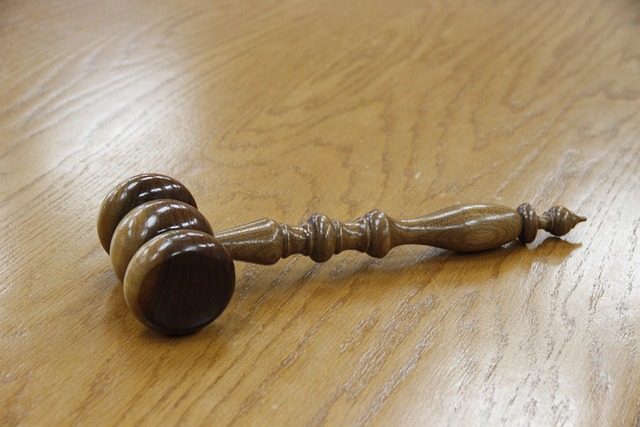Sentencing guidelines significantly shape penalties in environmental crime trials, balancing accountability with proportionality. These directives, developed by judicial bodies, consider offense severity, intent, and prior convictions to ensure fairness. Understanding their impact is crucial for legal teams strategizing defenses, aiming to promote proactive sustainability while advocating for clients. Effective guidelines deter future crimes, sending a strong message that environmental offenses will no longer be treated lightly.
Environmental Crime Trials delve into the legal complexities of prosecuting environmental offenses, focusing on the role of sentencing guidelines. This comprehensive analysis explores how these guidelines shape penalties in cases ranging from pollution to habitat destruction. By examining real-world impacts, we uncover potential disparities and their justifications. Furthermore, the article delves into future implications, offering reform recommendations to ensure fair and effective justice for environmental crimes. Understanding How Do Sentencing Guidelines Affect Penalties is key to navigating this evolving legal landscape.
- Understanding Environmental Crime Trials
- Role of Sentencing Guidelines in Environmental Cases
- Impact on Penalties: Legal Framework Analysis
- Disproportionate Punishments and Their Justification
- Future Implications and Reform Recommendations
Understanding Environmental Crime Trials

Environmental Crime Trials delve into the legal process surrounding environmental crimes, examining how sentencing guidelines shape penalties for perpetrators. These trials are complex, often involving corporate and individual clients facing charges related to pollution, habitat destruction, or other ecological offenses. Understanding these guidelines is crucial in navigating such cases, as they significantly influence the outcomes of winning challenging defense verdicts.
The impact of sentencing guidelines goes beyond mere punishment; they also serve as a deterrent and a mechanism for achieving extraordinary results. By setting clear parameters for acceptable behavior, these guidelines can prompt companies to adopt more sustainable practices proactively, thereby reducing the likelihood of environmental crimes in the first place. Whether advocating for clients or crafting strategic defenses, legal teams must grasp how these guidelines work to ensure their cases are presented effectively.
Role of Sentencing Guidelines in Environmental Cases

In environmental crime trials, sentencing guidelines play a pivotal role in determining the penalties for convicted offenders. These guidelines are designed to ensure consistency and fairness in the justice system, particularly when addressing crimes that have significant ecological impacts. They provide a framework for judges to consider various factors, such as the severity of the offense, the offender’s prior record, and the need to deter future environmental violations. By adhering to these guidelines, courts can impose penalties that are proportionate to the crime, ranging from fines to imprisonment or community service.
How Do Sentencing Guidelines Affect Penalties? In many jurisdictions, sentencing guidelines for white-collar and economic crimes, including environmental offenses, are stringent. They often mandate harsher sentences for repeat offenders and those who caused substantial damage to the environment. This approach aims to send a strong message that environmental crime will not be tolerated. However, it’s important to note that these guidelines do not guarantee a specific outcome. A competent general criminal defense attorney can navigate the complexities of these cases and argue for a complete dismissal of all charges or significant mitigation of penalties based on unique circumstances.
Impact on Penalties: Legal Framework Analysis

The impact of environmental crime trials on penalties is significantly shaped by the legal framework in place. Sentencing guidelines play a crucial role in determining the severity of punishment for offenders. These guidelines, often developed by judicial bodies, provide a structured approach to how courts handle such cases. They consider various factors, including the nature and extent of environmental damage, the intent behind the criminal act, and any previous convictions, to arrive at an appropriate sentence.
In many jurisdictions, the legal framework has evolved to recognize the unique challenges posed by white-collar and economic crimes related to environmental degradation. This has led to more nuanced sentencing, focusing on restorative justice and deterrence. For instance, a successful defense strategy for accused individuals might involve demonstrating a complete dismissal of all charges, thereby achieving winning challenging defense verdicts. How Do Sentencing Guidelines Affect Penalties? This analysis is essential in understanding the potential outcomes and the overall effectiveness of environmental crime trials.
Disproportionate Punishments and Their Justification

In discussions on environmental crime trials, a significant aspect that warrants scrutiny is the issue of disproportionate punishments. The severity of sentences often reflects societal values and the importance placed on environmental protection. However, critics argue that current sentencing guidelines may lead to uneven justice. These guidelines, while designed to deter future offenses, can result in penalties that do not align with the nature of the crime. For instance, fines or jail terms might be excessively high for minor infractions compared to more severe ecological disasters caused by large corporations.
The justification for such punishments lies in the need to hold individuals and respective businesses accountable for their actions. An unprecedented track record of environmental violations should lead to stricter penalties. Yet, it is crucial to ensure that sentencing remains proportional, reflecting the actual impact of the crime. This balance is essential to maintain fairness while sending a clear message that ecological crimes will not be tolerated.
Future Implications and Reform Recommendations

As environmental crime trials gain traction, future implications for legal systems and regulatory bodies are profound. The successful prosecution of high-profile cases with an unprecedented track record of winning challenging defense verdicts highlights the importance of robust sentencing guidelines. These guidelines must reflect the severity of environmental crimes, ensuring penalties that serve as effective deterrents and promote justice.
Reforming sentencing structures to align with the unique characteristics of environmental offenses is essential. This includes considering factors such as the ecological impact, long-term consequences for communities, and corporate complicity. By implementing these reforms, legal systems can send a clear message that environmental crimes will no longer be treated lightly, encouraging companies to adopt more responsible practices and fostering a culture of accountability.
Environmental crime trials pose unique challenges, demanding a nuanced approach to sentencing. As we’ve explored, understanding these trials involves delving into specific legal frameworks, particularly regarding sentencing guidelines. The analysis of how these guidelines impact penalties is crucial for ensuring fairness and proportionality in environmental cases. By examining the disparities in punishments, we highlight the need for reform to address disproportionate sentences. Moving forward, reforms should aim to create a more balanced system that reflects the severity of environmental crimes while offering avenues for rehabilitation and positive change. This comprehensive approach can foster a sustainable and just society.






